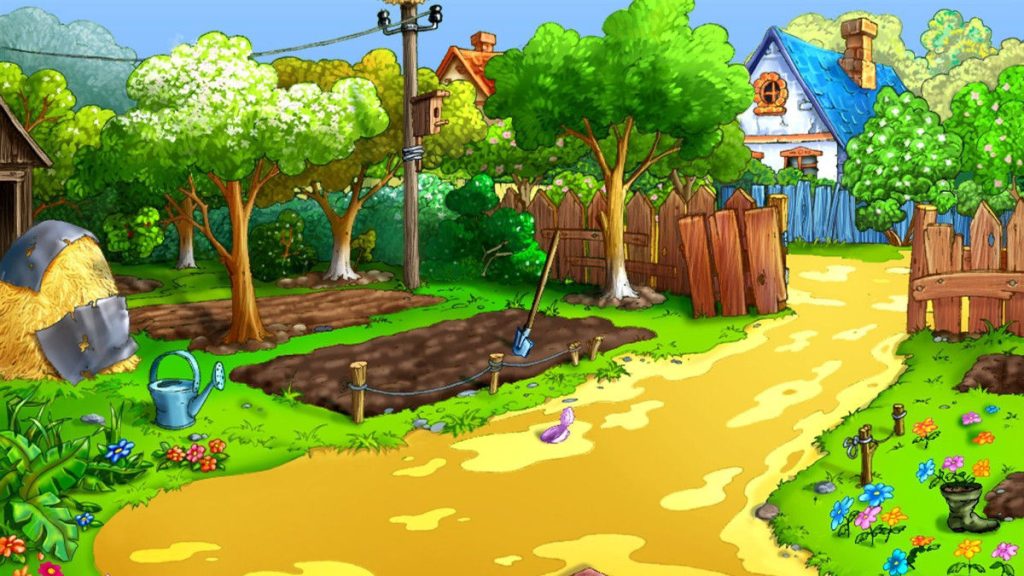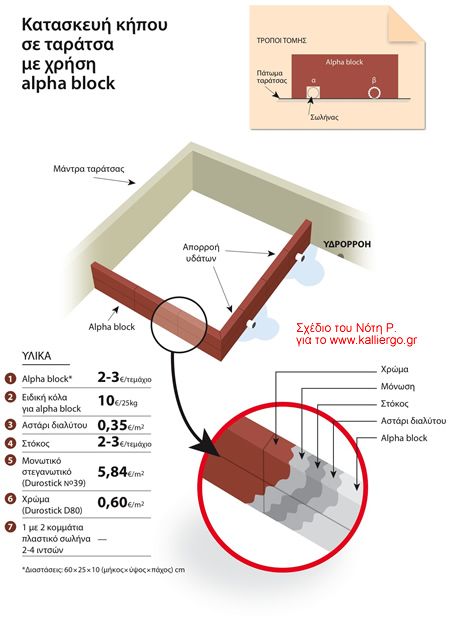We find out what the ideal garden type is.
Garden types. A historical journey through the gardens of modern Greece and their use.
What is the ideal garden type and why.
Our opinion on what the ideal garden is is pretty much a personal matter.
Some people want to have a beautiful garden where everything is neat and tidy like a living room and others prefer the garden to be functional and useful.
What we think of as the ideal garden is ultimately a result of experience, attitude to life, experience, financial situation and available space.
The garden in the village was like this
Several decades ago, the village home garden was a functional and productive space.
The family grew their vegetables there. The garden contained many productive and some ornamental trees.
Flowers with beautiful blossoms and shrubs were an integral part of the garden.
In some corners there was also a chicken coop with chickens, ducks and even turkeys to have fresh eggs for the children.
Lawns were practically unknown.
The garden as a symbol of social status
Gardens in cities
After the 1960s there was a strong trend for Greeks to flee the villages and the countryside. They moved to the big urban centres and left the countryside and their villages.
At first in the cities. In apartments.
Those who managed to succeed economically left the city centre and moved to the suburbs.
There, the best and biggest house usually had a garden.
In almost all these cases, the garden became a demonstration of elevated social status.
The garden became a lawn. The plants that the trees used were ornamental.
But all of these needed constant tending. But the owner did not have the knowledge, time or even the inclination to take care of the garden. So gardeners were enlisted to take care of the garden.
The garden had to be kept in permanent order. Weeds and fallen leaves were a problem and a big one at that. The weeds were pulled up and the leaves were piled up like garbage.
The gardens in the countryside
But the same phenomenon was also observed in the countryside.
In the countryside, too, the standard of living and the economic level rose.
This often led to changes in gardens that were intended to demonstrate the ‘rise’ in the social status of their owners.
Gardens became urbanized, if I can describe it that way.
They too acquired lawns, beautiful flowers and trees. Sometimes gardeners were recruited here too.
The peculiarity of the countryside is that there is often a separate space, a plot of land used for growing the family’s vegetables. Look for blackberry plants? We have over 150 blackberry varieties in our database. Prime-Ark Freedom, Black Gem, Ponca, Caddo and others with description and reviews, videos and photos! So there is no reason for these to coexist with the home garden.
The gardens in the cottages
Around the major urban centers, new communities developed with plots of land purchased from city dwellers. Residents who had previously lived in small apartments in the cities. Too many of them had moved to the cities many years ago from their villages in the countryside.
On the plots they acquired, many of them built arbitrary houses and around them, there was enough space to turn them into gardens.
In the early years, the distances from house to house were relatively long. This gave their owners great freedom.
Most of them created gardens that resembled the garden they had in the village. Perhaps consciously, perhaps out of some inner need to return to their roots.
This was sometimes also a practical matter, as there were no finances for luxuries.
A simple and efficient garden was a one-way street in these cases.
Some, more financially comfortable, preferred to build urban gardens around their cottages.
With lawns, plants with beautiful flowers, ornamental shrubs and a combination of productive and ornamental trees.
In the majority of cases, garden maintenance is done by the owners in their spare time. In a few cases gardeners are employed.
My opinion. The garden as a functional and useful space
So it’s time to give you my personal opinion.
I already have 14 years of experience with what is called a garden.
Garden not as a piece of land around the house, but as a living organism that changes as the seasons change.
For me the ideal garden includes productive trees, space for growing vegetables, herbs, flowers and plants that suit the microclimate of the area, vines.
And additional space for composting for fertilizer production from the same materials that our garden produces. Areas for depositing fertilizer and equipment. Space for carrying out work. It has minimal water requirements.
My view is that we need to treat and utilize the garden and the plants it contains as a functioning ecosystem where nothing is wasted and everything works together harmoniously.
Our garden should be in harmony with nature and the seasons.
It is good to try to make the garden beautiful and tidy. But this should not become an end in itself.
In the garden and in nature there is an organized, disorganized anarchy that leads to a harmonious whole.
For me, the lawn is something completely unnecessary. It requires a lot of care, has maintenance costs and requires large amounts of water to keep it green.
Instead of a lawn, we can let the weeds grow and mow them with a lawnmower when needed.
They will dry out in the summer because that is their nature. But in the other three seasons of the year (Autumn, Winter, Spring), our garden will be green and full of color from beautiful flowers.
We will need to make provisions to have space to produce compost.
Twigs, weeds, fallen leaves, everything that in “urban” gardens is considered a problem and trash, for us will be a valuable source of fertilizer production and recycling through composting.
After pruning the trees, we can cut the branches into small pieces with the help of a biotrimmer and make wood chips which will help improve the soil. Burning is not the right way to recycle.
Even if you happen to have one or more pine trees in your garden, you can use the pine needles that keep falling and looking like a problem, for cover around your trees. Those won’t go to waste either. They are all recycled and used in the functional garden.
If you even have the “luxury” of space to add a chicken coop, so much the better for you. You’ll have fresh eggs and plenty of good manure from your hens.
The functional garden is neither messy nor ugly. It’s certainly not a “living room” with everything in perfect order.
The functional garden is one with nature. It is nature. It follows the rules of nature. It is nothing but nature.
The functional garden has low maintenance costs.
The functional garden is useful and productive. Not just decorative.
Functional is in terms of accounting, active as it provides us with food, not passive which consumes funds just to maintain it.
It is only good for us to engage with the functional garden and take care of it. It helps us psychologically. It keeps us in good physical condition. It educates us. It brings us in constant contact with nature.
Report
If you observe carefully, what I describe as the ideal garden is pretty much the village garden. That is, where we started.
And that’s no accident.
For thousands of years this type of garden has proven to be functional, sustainable, productive, practical, economical (not costly).
But as we moved to cities and acquired other images and models, we forgot about it.
It is time to rediscover the functional garden!
Image source: https://wallpaperaccess.com/garden-cartoon
Tags: COMPOST • EXPERIENCES • GARDEN • LAWN • PEOPLE • PINE NEEDLES • RECYCLING




